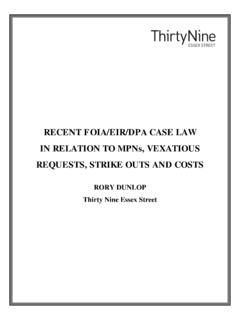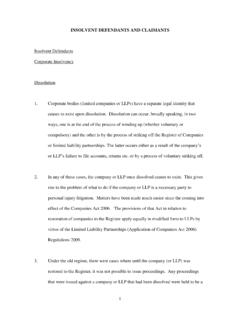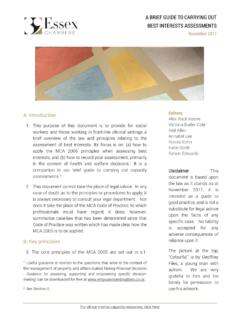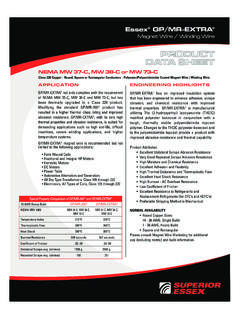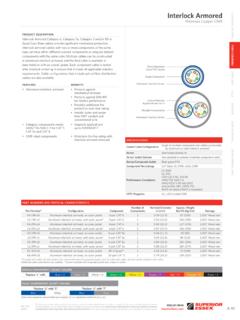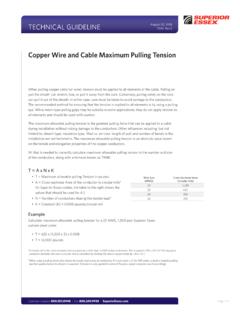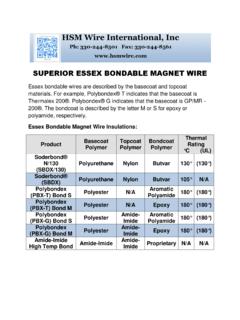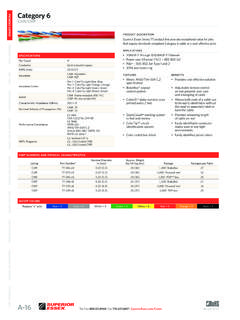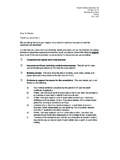Transcription of Overview of Judicial Review - 39 Essex Chambers
1 Overview of Judicial Review Richards Harwood & Wald 9 September 2010 2 Overview of Judicial Review 1. A general Overview of Judicial Review can be divided into the following topics, of which the second (Grounds of Review ) forms the focus of today s presentation: (1) Procedural issues. (a) Introduction. (b) Pre-action conduct. (c) Protective Costs Orders. (d) Commencing a Claim. (e) The Acknowledgment of Service. (f) Permission. (g) Costs at the Permission stage. (h) Standing. (i) Alternative Remedies. (j) Time Limits. (k) Discretion to Refuse a Remedy. (2) Grounds of Review (a) Illegality (i) Doing an act with no legal authority (simple illegality). (ii) Misinterpreting the law governing the decision. (iii) Failure to retain a discretion by: (1) Improper delegation.
2 (2) Fettering of discretion by adoption of over-rigid policy. (iv) Abuse of discretion: (1) Using a power for an improper purpose. 3 (2) Taking into account irrelevant considerations or failing to take into account relevant considerations. (b) Irrationality. (c) Procedural Impropriety. (3) Remedies (a) Prerogative Remedies: (i) Quashing Order (ii) Mandatory Order (iii) Prohibiting Order (b) Common Law Remedies: (i) Injunction (ii) Declaration (c) Pecuniary Remedies: (i) Damages (ii) Restitution. 4 Procedural Issues Introduction 2. A claim for Judicial Review is defined widely by CPR (2)(a) as a claim to Review the lawfulness of (i) an enactment; or (ii) a decision, action or failure to act in relation to the exercise of a public function.
3 3. The Judicial Review procedure must be used in a claim for Judicial Review when the Claimant is seeking a prerogative order (mandatory order, prohibiting order, or quashing order) or an injunction under s30 Supreme Court Act 1981 (restraining a person from acting in any office in which he is not entitled to act): CPR 4. The Judicial Review procedure may be used in a claim for Judicial Review where the Claimant is seeking a declaration or an injunction: CPR (1). A claim for Judicial Review may include a claim for damages, restitution, or the recovery of a sum due, but may not seek such a remedy alone: (2). Pre-action conduct 5. The parties must comply with the pre-action protocol: see 6.
4 Except in urgent cases, before making a claim the Claimant must write a letter before claim to the proposed Defendant in the standard form (see Annex A of the Protocol) identifying the decision which is being challenged, giving a brief summary of the facts, and explaining why it is contended to be wrong , and what 5 remedy is sought. The letter should normally identify any interested parties, and copies should be sent to them. 7. Within 14 days the Defendant should send a letter of response in the standard form (see Annex B). This should provide where appropriate a fuller explanation of the decision, and indicate whether the claim is conceded in whole or in part, or will be contested.
5 The letter of response should be sent to the interested parties. 8. Failure to comply with the pre-action protocol may well affect a party s prospects of recovering costs: (1) In R (William Kemp) v Denbighshire Local Health Board [2006] EWHC 181 (Admin) the Claimant had effectively succeeded in obtaining funding of his nursing home costs; but because he had failed to comply with the pre-action protocol, there was no evidence that the Defendant would not have offered a Review had a protocol letter been written, so no order for costs was made. (2) In R (Ewing) v Office of the Deputy Prime Minister [2006] 1 WLR 1260 Lord Justice Brooke commented (para 54): Needless to say, if the claimant skips the pre-action protocol stage, he must expect to put his opponents to greater expense in preparing the summary of their grounds for contesting the claim, and this may be reflected in the greater order for costs that is made against him if permission is refused.
6 (3) In Aegis Group Plc v Inland Revenue Commissioners [2005] EWHC 1468 (Ch) the Claimant discontinued Judicial Review proceedings, but because the Defendant took almost two months to reply to the Claimant s initial protocol letter, it was awarded only 85% of its costs. 6 Protective Costs Orders 9. A Claimant may wish to apply for an order that it pays not costs even if it loses the case. In R v Lord Chancellor ex p Child Poverty Action Group [1999] 1 WLR 347 Dyson J accepted that he had the power to make such an order now known as a Protective Costs Order ( PCO ). However Dyson J indicated that only in the most exceptional circumstances would the discretion to make a PCO be exercised in a public law case.
7 The criteria were stated at p358: (1) The court is satisfied that the issues raised are truly ones of general public importance; and (2) That it has a sufficient appreciation of the merits of the claim (by short argument) that it can conclude that it is in the public interest to make the order. (3) The court must also have regard to the financial resources of the applicant and respondent, and the amount of costs likely to be in issue. (4) It will be more likely to make an order where the respondent clearly has a superior capacity to bear the costs of the proceedings than the applicant, and where it is satisfied that, unless the order is made, the applicant will probably discontinue the proceedings, and will be acting reasonably in so doing.
8 10. In R (Corner House Research) v Secretary of State for Trade and Industry [2005] 1 WLR 2600 the Court of Appeal reviewed the jurisdiction and procedure of PCOs. The case involved an application for Judicial Review of procedures adopted by the Export Credit Guarantee Department of the DTI. Corner House was a non-profitmaking company with a particular interest and expertise in examining bribery and corruption in international trade. 7 11. The general principles were recast as follows: 1. A protective costs order may be made at any stage of the proceedings, on such conditions as the court thinks fit, provided that the court is satisfied that: i) The issues raised are of general public importance; ii) The public interest requires that those issues should be resolved; iii) The applicant has no private interest in the outcome of the case; iv) Having regard to the financial resources of the applicant and the respondent(s) and to the amount of costs that are likely to be involved it is fair and just to make the order; v) If the order is not made the applicant will probably discontinue the proceedings and will be acting reasonably in so doing.
9 2. If those acting for the applicant are doing so pro bono this will be likely to enhance the merits of the application for a PCO. 3. It is for the court, in its discretion, to decide whether it is fair and just to make the order in the light of the considerations set out above. [74] 12. The second guideline in the CPAG case was modified, no PCO should be granted unless the judge considers that the application for Judicial Review has a real prospect of [73] (emphasis added) 13. The court commented that Dyson J's requirement that the court should have a sufficient appreciation of the merits of the claim after hearing short argument tends to preclude the making of a PCO in a case of any complexity. [71] 8 14.
10 A PCO which prescribed that there be no order as to costs whatever the outcome would generally only be granted where the Claimant s lawyers were acting pro bono. 15. Where the Claimant is expecting to have its reasonable costs reimbursed in full if it won, a costs capping order was more likely to be required. 16. As to the amount of the cap: (1) the court should prescribe by way of a capping order a total amount of the recoverable costs inclusive, so far as a CFA-funded party is concerned, of any additional liability; (2) The liability of the defendant for the applicant's costs if the defendant loses will thus be restricted to a reasonably modest amount. The applicant should expect the capping order to restrict it to solicitors' fees and a fee for a single advocate of junior counsel status that are no more than modest.

